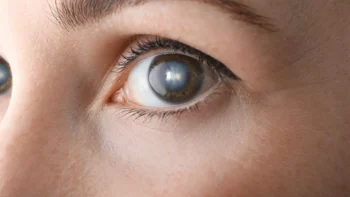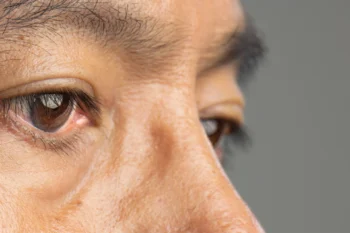Is your vision blurred? Do you find it hard to see at night? Are objects in the distance poorly defined? Are closer objects hard to make out? Do glasses make you uncomfortable, or does your prescription constantly change? Not a fan of contact lenses? Well, LASIK surgery may be for you.
Laser-assisted in situ keratomileusis — or LASIK — is one of the most common eye surgeries performed for vision correction. With this type of surgery, a unique type of laser is used to reshape the cornea of your eye. The cornea is the dome-shaped, transparent tissue covering the pupil and iris. It helps light as it enters your eye. LASIK surgery changes the shape of the cornea, improving vision.
Who is LASIK for, and What Problems Does it Treat?
LASIK surgery can be performed on many people. The treatment is usually not age-dependent, as long as the candidate is over 18. The prime candidate for surgery depends on the health and stability of the eye.
Your vision must be stable for a year or more for you to be considered a good candidate for LASIK. This means that your sight isn’t changing quickly. Your eyes must be healthy enough to withstand the surgery. Patients with cataracts or refractive problems may not be eligible for the surgery if those conditions are too severe.
LASIK surgery may be considered for three main vision problems:
- Myopia or nearsightedness — If your cornea is sharply curved or your eyeball longer than usual, rays of light that pass-through focus on the front of your retina. This blurs objects in the distance.
- Hyperopia or farsightedness — If your cornea is overly flat or your eye is short, light is focused behind your retina when it should be on it. This will make objects closer to you seen blurry.
- Astigmatism — Disruption of both near and distant vision can occur. This happens when your cornea curves unevenly. The resulting condition is astigmatism.
People considering LASIK surgery usually already use contact lenses or glasses.
Is There an Age Limit When Getting LASIK?
Age limits on eye surgery are not set in stone, but age can be a factor. The FDA limits approval for LASIK surgery to those over 18, with the average age for the surgery being patients between 20 and 40. Many eye doctors urge patients to wait until their eye prescriptions have stabilized to get surgery — usually in the mid-20s.
Many agree that the best time to get LASIK surgery is between 25-40. During this time frame, corrective device prescriptions have usually stabilized. This is essential to be a good candidate for surgery. Between the ages of 40 – 55, non-smokers without significant health problems are still good candidates for surgery. At this time, a family history of glaucoma, diabetes, and eye disorders begins to come into play.
When there is a high risk for cataract development, LASIK surgery may not be the best option for treatment. A cataract-corrective procedure must happen first. From the age of 56 and up, LASIK can still be performed, but more concerning health problems take priority. Overall health is more important than age in the decision whether to proceed.
Another thing to consider with age is the purpose of LASIK. It is designed to correct one-distance vision. Ultimately if you have the surgery to correct vision distance problems, you may still have to wear reading glasses. Also, some patients have one-sided LASIK — ( monovision) — to correct one eye for reading and one for distance issues. Your eye doctor will tell you what options are best for your particular situation.
What Other Options Are Available Besides LASIK?
Several options are available for people who are not prime candidates for LASIK surgery. Brimhall Eye Center offers ICL, PRK, and clear lens exchange.
IVisian Implantable Contact Lens (ICL) — ICL corrects your vision by placing a synthetic lens in your eye. It sits behind the natural eye lens — which is behind the iris. The lens is tailored to correct refractive errors completely, just as a regular contact lens would. The results are comparable to those of LASIK surgery. It is an excellent alternative for those who cannot get LASIK surgery. After ICL surgery, you no longer need glasses, and vision correction is immediate.
Patients over the age of 40 are usually recipients of ICL, but it is an option for younger patients, too. Patients typically have a large prescription that LASIK surgery cannot fix. ICL cannot correct astigmatism.
Photo-Refractive Keratectomy (PRK) — PRK reshapes the cornea to correct your vision. The surgeon uses an alcohol solution to remove surface cells on the cornea. Then, the cornea is reshaped using a precision laser. Your doctor will place a soft contact in your eye after the cornea is shaped correctly. This acts as a bandage while your cornea heals. The contact is removed after about a week.
PRK is used for the correction of hyperopia, myopia, and astigmatism. It can both correct the shape of the eye and clear up vision problems. PRK is a good option for those with dry eyes or thin corneas.
Clear lens exchange — Also known as refractive lens exchange, clear lens exchange is corrective surgery. The natural lens in your eye is replaced with an artificial one. It is the same as cataract surgery. It focuses the new lens to perfect your vision and correct other pathologies. Your vision will be clear after surgery. This procedure is best for those with cataracts — or those in whom cataracts are just beginning to form.
The professionals at Brimhall Eye Center will work with you to find the best option for your eyes. There are many surgical and non-surgical procedures available. They will work with your budget and ensure that your vision needs are met.





